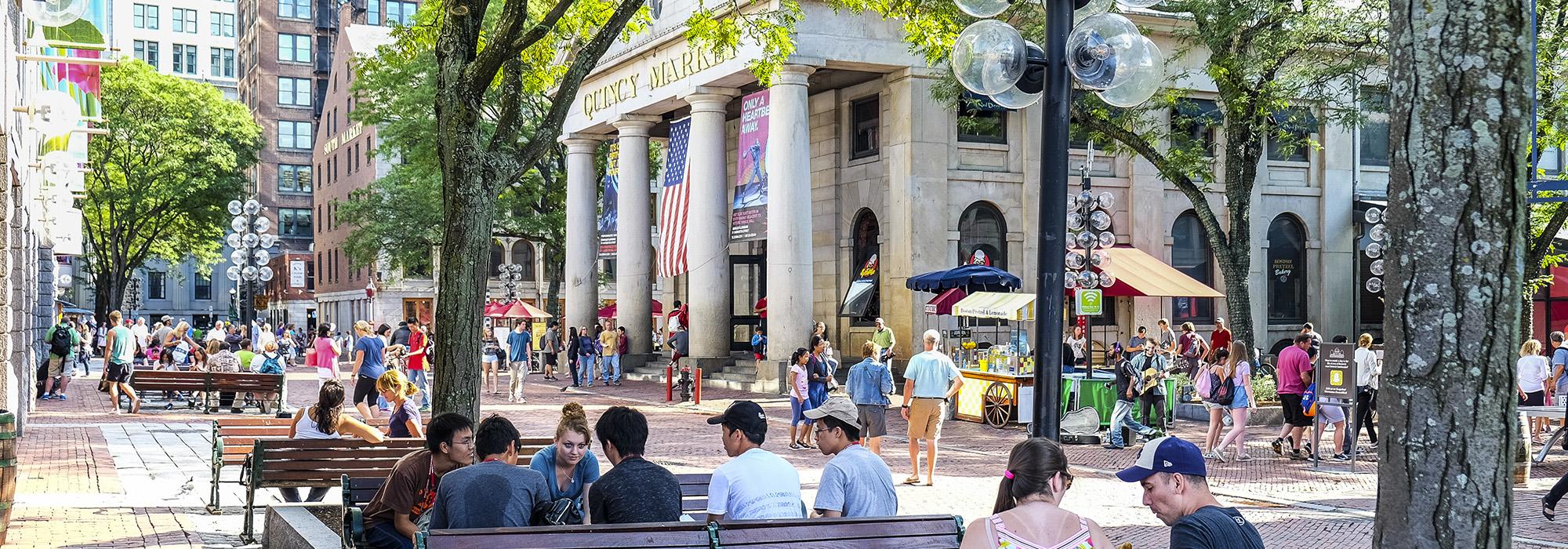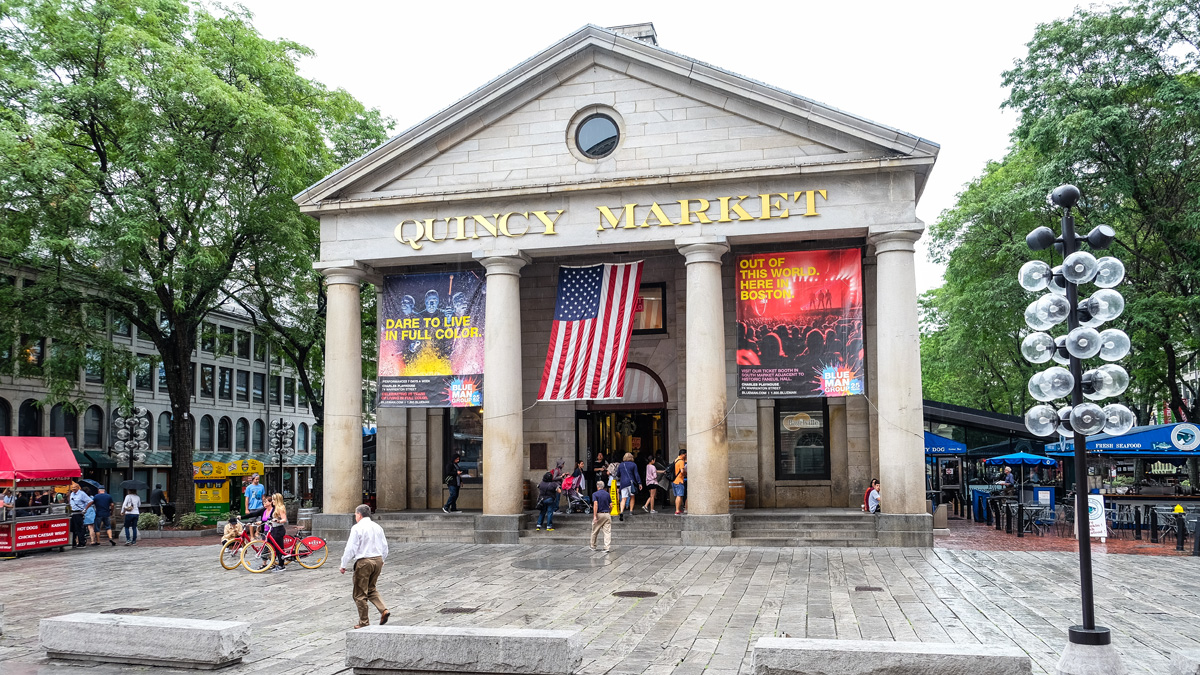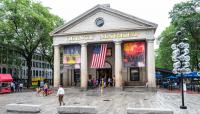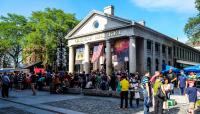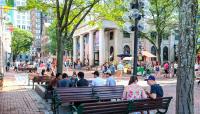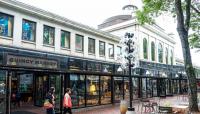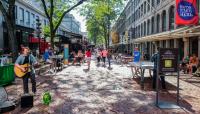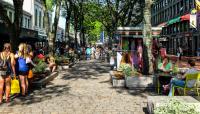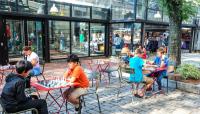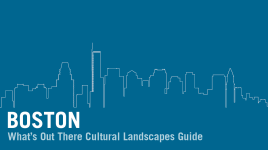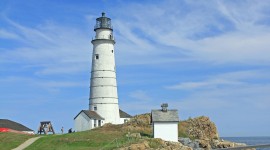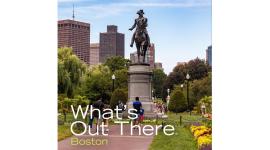Landscape Information
Situated in Downtown Boston, this market was built from 1824 to 1826 to accommodate the overflowing number of vendors and patrons to neighboring Faneuil Hall. It was Boston’s first major project after officially becoming a city in 1822 and was named for Mayor Josiah Quincy. Architect Alexander Parris designed the Greek Revival building, which features columns and pediments at each end and a central copper dome. The market is fronted by a paved plaza featuring granite benches and lighting fixtures. To the north and south of the building are the North and South markets, which are separated from Quincy Market by stone and brick-paved areas featuring granite seating, wooden benches, lighting fixtures, outdoor vendors, and planting beds each containing a tree.
Due to lack of upkeep, Quincy Market had fallen into disrepair by the 1960s. In 1966 the Boston Redevelopment Authority authorized a preservation and modernization study on the building, which resulted in a report that won a two million dollar grant to advance its restoration. The architecture firm Benjamin Thompson & Associates and landscape architecture firm Pressley Associates oversaw the rehabilitation that began in 1975 and lasted until the mid-1980s and which was undertaken by The Rouse Company. This pioneering example of adaptive reuse in a commercial setting set a standard for preserving historic commercial districts as a means of boosting the local economy. A popular site along the Freedom Trail, Quincy Market is one of Boston’s most recognizable tourist attractions and continues to operate as a market. Quincy Market was listed in the National Register of Historic Places and designated a National Historic Landmark in 1966.



